This blog was written by Erin, a recent placement student with us – and we’ll let her introduce herself!
My name is Erin; I am currently a student at the University of Manchester studying for an MA in Art Gallery and Museum Studies.
As part of my course, I was offered the opportunity to do a work placement as a compliment to my classroom-based studies. I jumped at the opportunity, upon reading the different placements on offer I was immediately interested in a placement being offered by Bradford Museums and Galleries pertaining to the ‘Sheet Music Collection’ at Cliffe Castle.
Now I must admit that I am in no way musical, after several foiled attempts at many instruments it seems that my talents are not that way inclined – quite a disappointment coming from a musical family! However, I have a great appreciation for music and saw this as an opportunity to put my limited knowledge to work whilst developing my skills as a museum professional.
My role at the museum focused in the aforementioned ‘Sheet Music Collection’, updating and adding to records that already existed on the Collections Management System of the service. A Collections Management System or CMS is a programme which helps museums keep track of the objects they have, where they are, what condition they’re in and records specific details relating to the objects which is helpful when planning exhibitions and events. The records of many of the objects I looked at had not been updated since the early 2010s when a collections review took place. This gave me the opportunity to add detail to what was already there
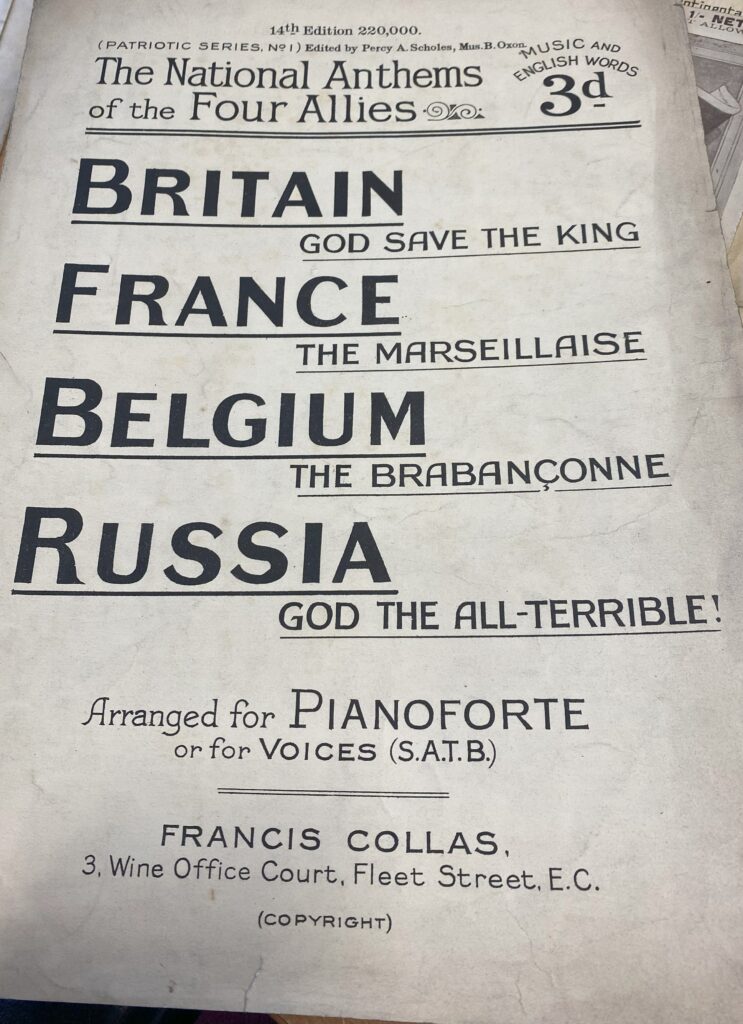
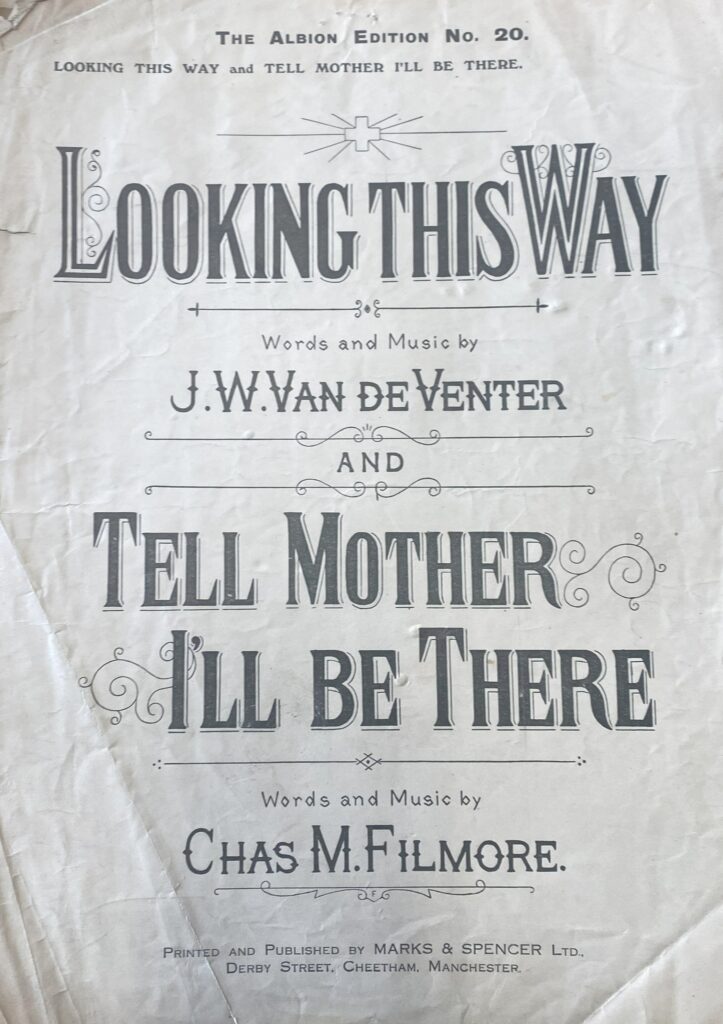
Over the first few weeks, I sorted through the whole collection and transcribed elements into my own notes. I ended up with a register of over 300 objects, just a small part of the over 1 million the museum service has in its collections!
Later on, I began to relay the information I had collected into the central system. Though I did not get to fully complete this part of my aim, the process is ongoing and all of the ‘Sheet Music Collection’ will eventually have a more up-to-date record attached to its name.
The ‘Sheet Music Collection’ itself was acquired by the museum in 1959 after Keighley Museum was closed and the role of the town’s museum fell to Cliffe Castle. All of the collections from Keighley Museum, also known as Victoria Park Museum, were amalgamated into the existing collections creating a far wider ranging and diverse collection than before which could tell the story of the town as well as, the tales of Cliffe Castle itself.
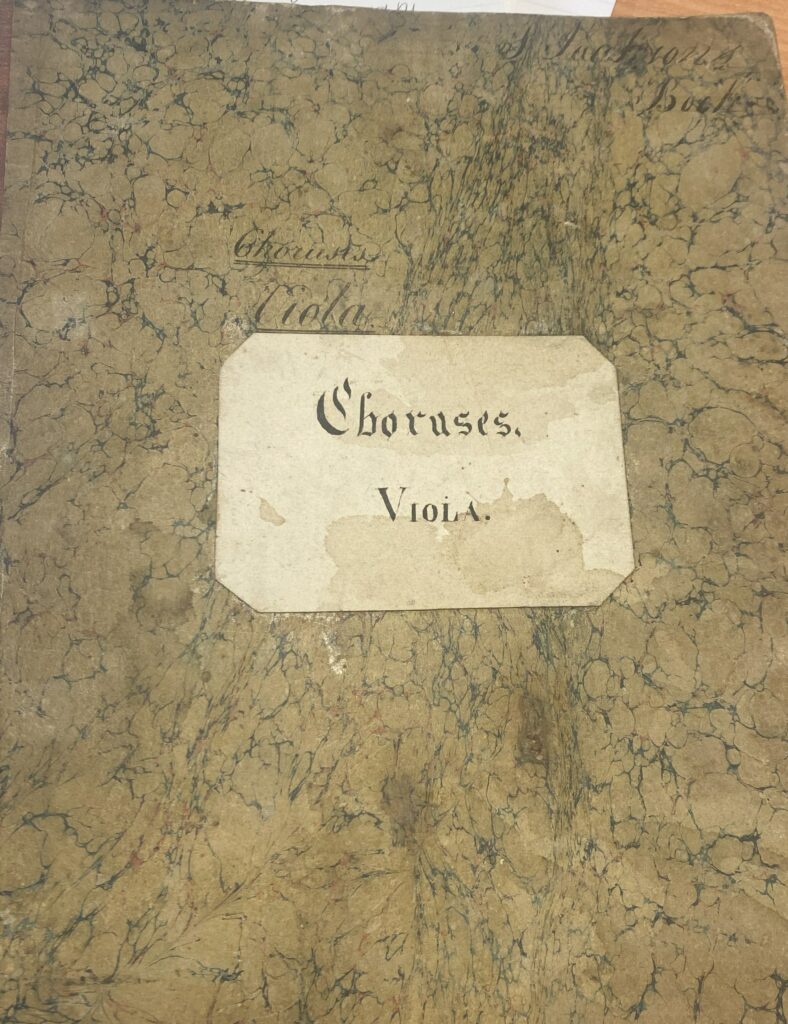
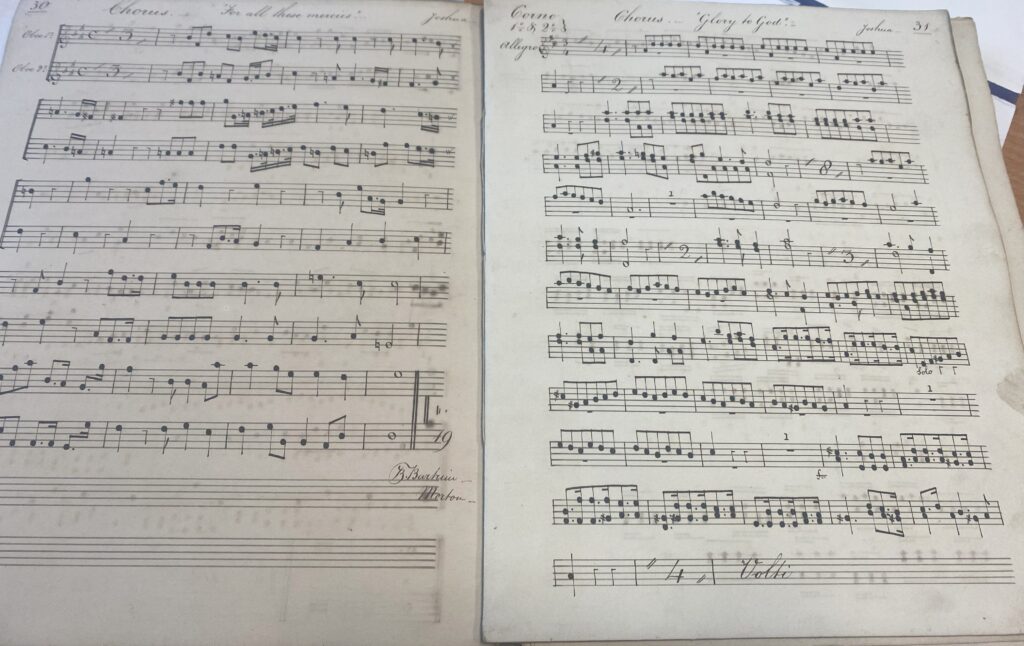
All of the music was handwritten and seems to have belonged to a professional set of musicians
Now, let me talk you through some of the interesting things I found within the collection. First of all, I found a variety of Psalm Tune Books dating from around the 1750s, making them possibly one of the oldest items in the collection.
Psalm Tunes are pieces of music which are named after specific towns. Back in the day when people were largely musically illiterate and had limited reading skills, hymns relating to certain passages in the Bible were given names relating to specific geographical areas, assuming that people could read town names. The presumption being that people would then be able to identify specific timings, keys and words based upon the town name associated with them. Psalm Tunes named after significant towns or cities, for example Manchester, were universally recognisable and cropped up in Psalms Tune books all over the country. Some are still recognised as such today. On the other hand, specific churches often related tunes to places in the local area, to surrounding small towns and villages
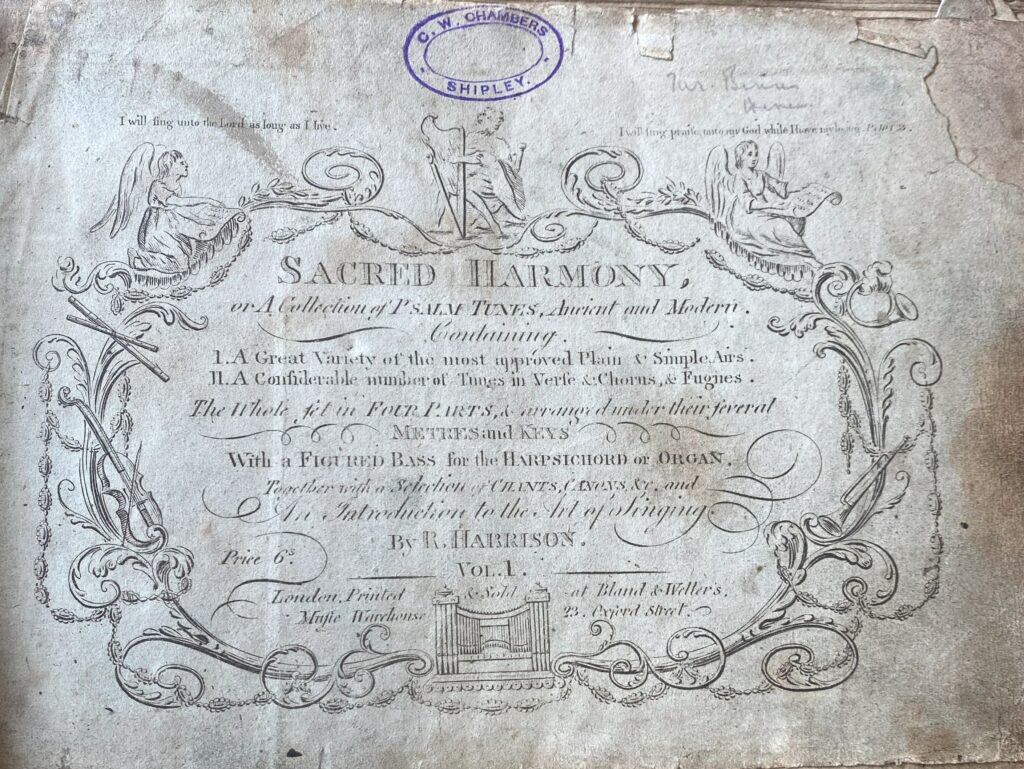
In the collection at Cliffe Castle we have examples of this but also ones from further afield. My favourite example comes from the East Midlands, where many own home town of Kettering is mentioned – a rather surprising thing to find in West Yorkshire! Though we know little of the motivations of the collector, or the reason why they decided to obtain Hymn Tunes Books from differing areas of the country, we can understand why they are of importance to us today. Looking at them we can understand the types of hymns and specific Bible passages which were widely used in the day, we can see what the most popular ones were as well by considering which pages are the most thumbed and it gives us a window into the education of the day.
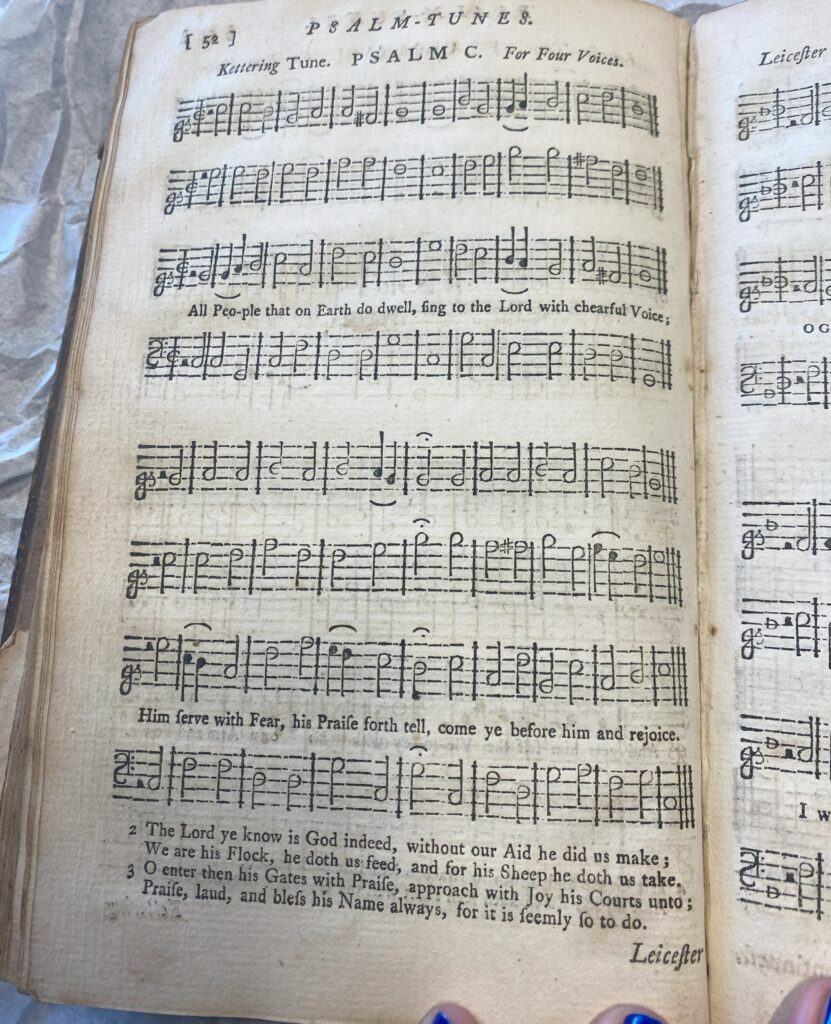
Another part of the collection I found exceedingly interesting was that relating to J T Carrodus. Carrodus was born in Keighley in 1836, he later went on to become one the the foremost English violinists. In fact, he was the subject of the first public, solo violin concert in England! He then went on to teach at the Royal Academy of Music and play as principal violinist with the Philharmonic Orchestra. Though he lived for most of his life in London, he still had many relations in Keighley.
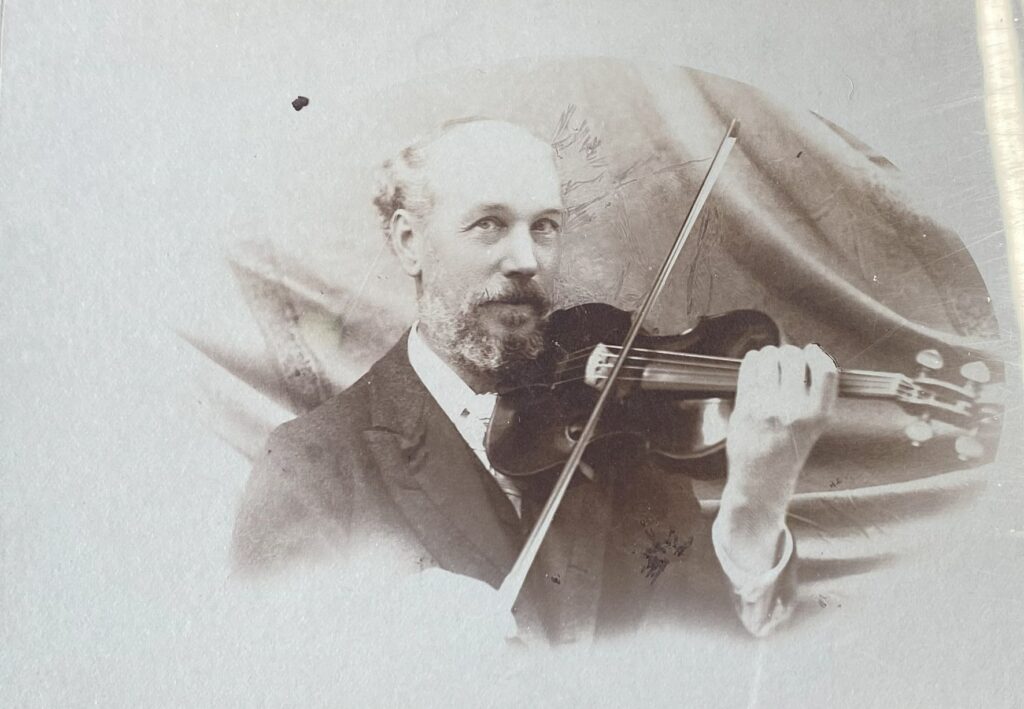
In 1930, the ‘Keighley News’ reported that a Mr William Carrodus, “a distant connection” of JT Carrodus, had attempted to make an exact replica of the famous Carrodus violin originally made by Giuseppe Guarneri ‘del Gesú’ in 1743. He had the idea of trying his hand at crafting the violin after buying a book on the subject from the Brontë Bookshop on Cavendish Street.

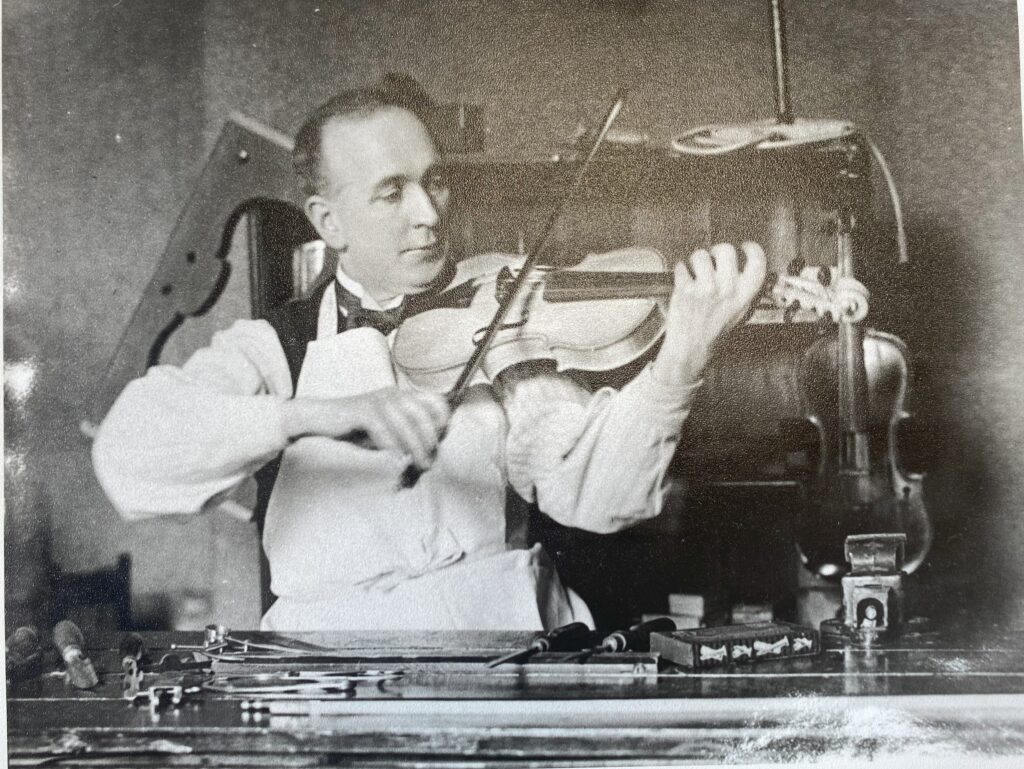
The violin was later sent to and tried by a variety of experts who commended Mr William Carrodus on his craftsmanship and the similarity of the piece to the original. One rather discerning expert in Sussex however did remark on the apparent unevenness of the varnish used on the instrument. As a consulation, he remarked that once Mr William Carrodus had perfected his craft “one or two goods players [would] advertise [his] fiddle”.
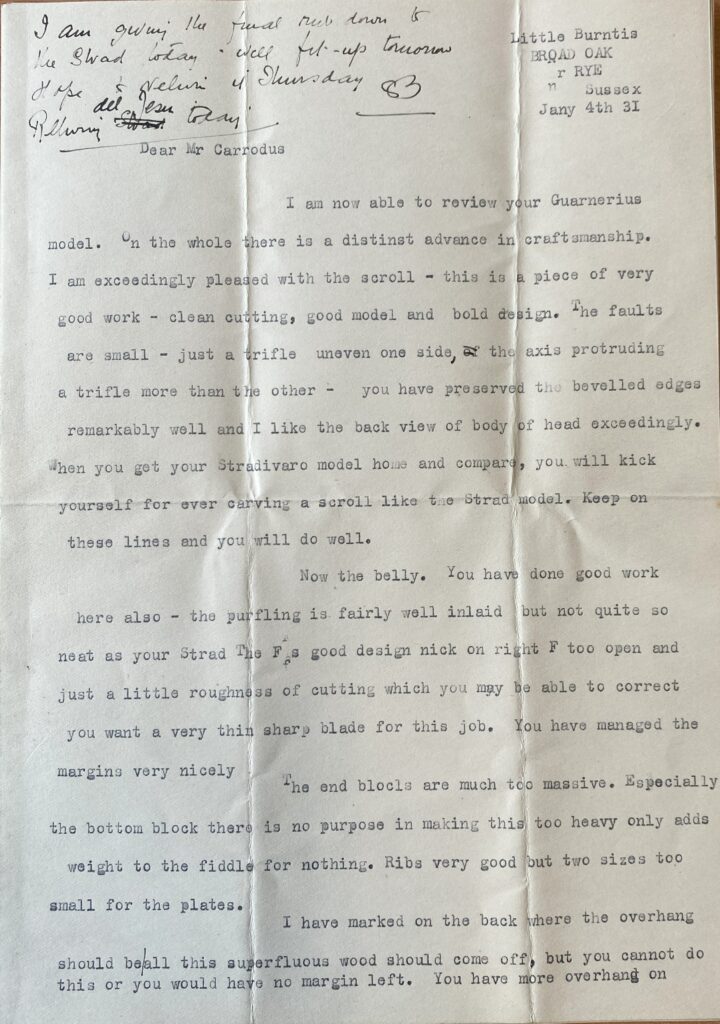
One of those to praise his work however was Mr Bernard Carrodus, the son of JT Carrodus, who was also a talented violinist. Bernard stated that his father would have been exceedingly pleased with the instrument and commended to novice, in both music and instrument making, on his craftsmanship.
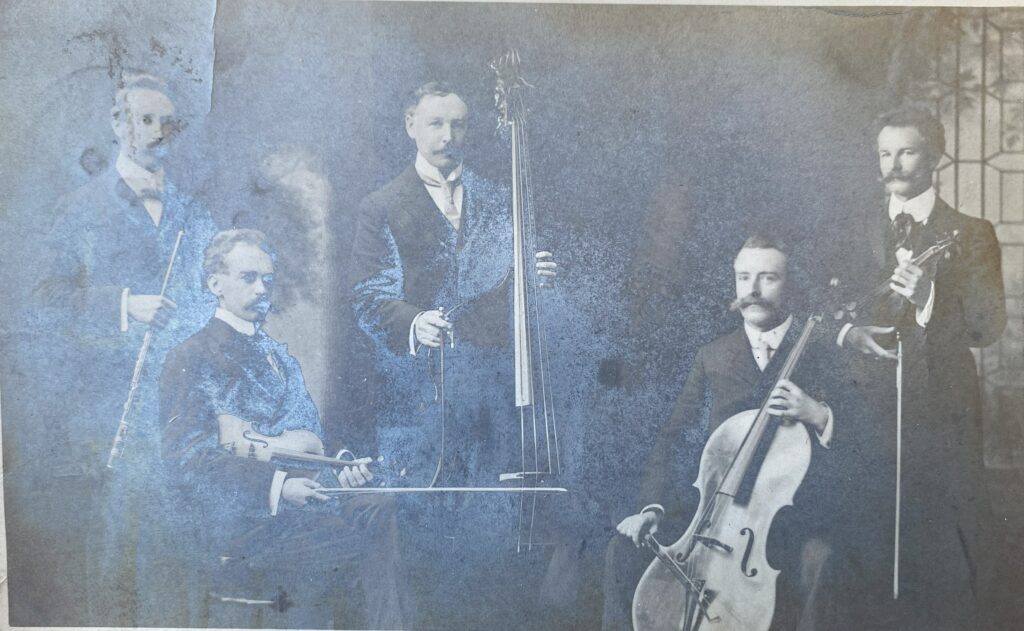
As well as my primary role with the ‘Sheet Music Collection’ I also had the opportunity to shadow and assist in a variety of different things during my time. For example, I helped to deinstall an exhibition in the Bracewell Smith Hall with the Collections Team, I assisted in the setting up of the Big Sing in February and I lead my own tour based on the interesting findings I have told you about today.
Overall, I’ve had a wonderful time at Cliffe Castle! Work placements are invaluable and have given me excellent insight into the world of work in the museum sphere. It has greatly boosted my confidence and given me skills that I wouldn’t have been able to learn in the classroom. I am so thankful for the opportunity and would encourage anyone who has the chance to visit Cliffe Castle!